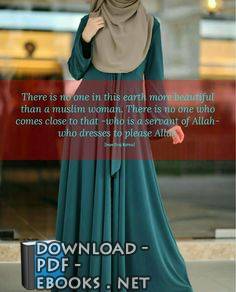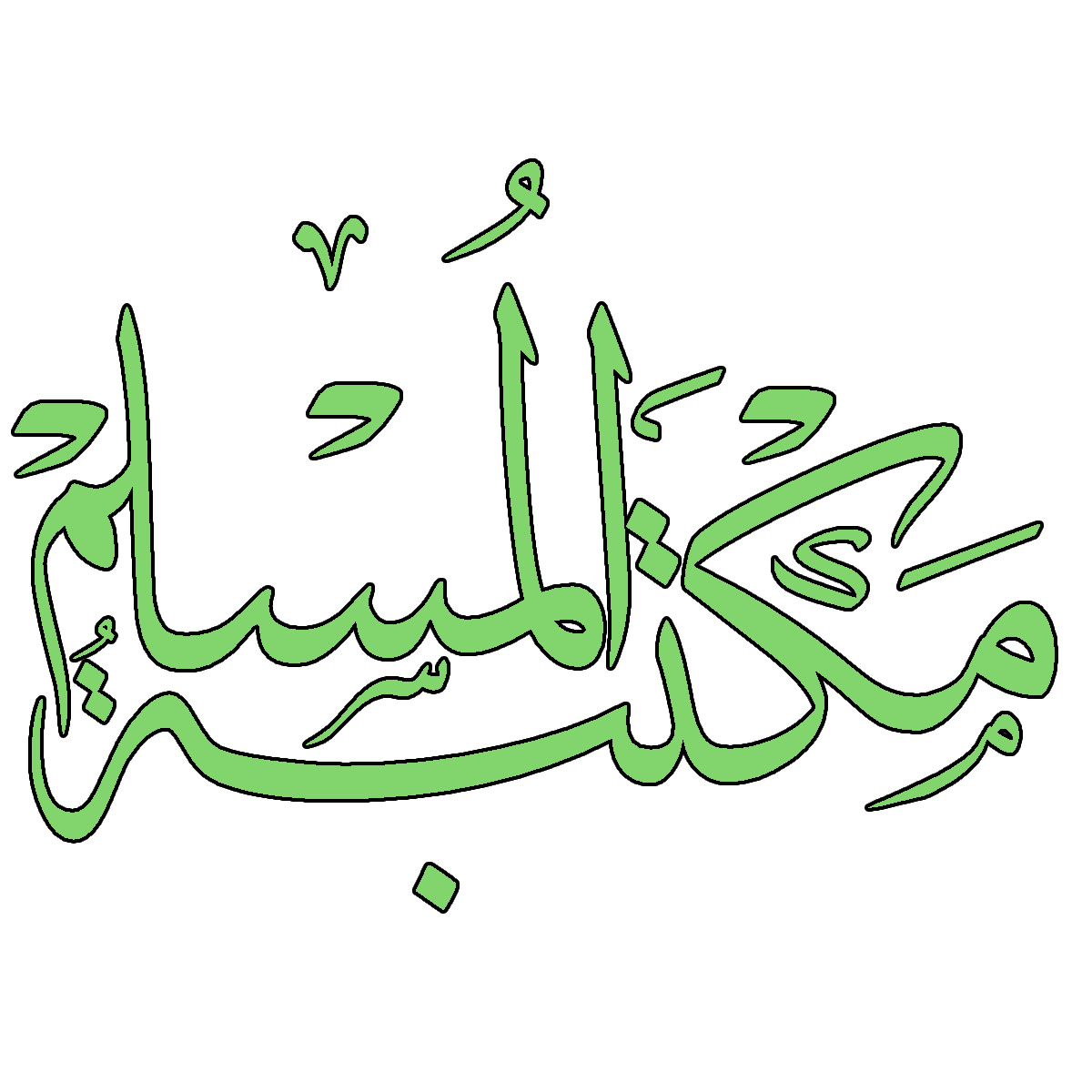📘 قراءة كتاب The Muslim Woman's Dress -according to the quran and sunnah أونلاين


يتحدث عن المرأة التي هي نصف المجتمع البشري، والتي ظلمت عبر حقب طويلة من تاريخ الإنسانية، فجاء الإسلام الذي هو منهج الله في الأرض، فكرمها وأعطاها الحقوق التي تليق بإنسانيتها ، كما أنه كلفها بواجبات منوطة بها تؤكد من خلالها رسالتها في الحياة التي خصها الله بها
قال تعالي :
﴿ إِنَّ الْمُسْلِمِينَ وَالْمُسْلِمَاتِ وَالْمُؤْمِنِينَ وَالْمُؤْمِنَاتِ وَالْقَانِتِينَ وَالْقَانِتَاتِ وَالصَّادِقِينَ وَالصَّادِقَاتِ وَالصَّابِرِينَ وَالصَّابِرَاتِ وَالْخَاشِعِينَ وَالْخَاشِعَاتِ وَالْمُتَصَدِّقِينَ وَالْمُتَصَدِّقَاتِ وَالصَّائِمِينَ وَالصَّائِمَاتِ وَالْحَافِظِينَ فُرُوجَهُمْ وَالْحَافِظَاتِ وَالذَّاكِرِينَ اللَّهَ كَثِيراً وَالذَّاكِرَاتِ أَعَدَّ اللَّهُ لَهُمْ مَغْفِرَةً وَأَجْراً عَظِيماً (35)﴾
[سورة الأحزاب]
جاء في القرآن الكريم والسنة النبوية آيات وأحاديث تدل على صفات المرأة المسلمة
قال تعالى :{ واذكروا في الكتاب مريم إذ انتبذت من أهلها مكانا شرقيا( 16 ) فاتخذت من دونهم حجابا فأرسلنا لها بشراً سويا( 17 ) قالت إني أعوذ بالرحمن منك إن كنت تقيا( 18 ) قالت أنى يكون لي غلام ولم يمسسني بشر ولم أكن بغيا( 20 ) قال كذلك قال ربك هو علي هين ولنجعله آية للناس ورحمة منا وكان أمرا مقضيا( 21 ) فحملته فانتبذت به مكانا قصيا( 22 ) سورة مريم.

The Muslim Woman's Dress -according to the quran and sunnah
DR. Jamal A .Badawi
لباس المرأة المسلمة
وزارة الأوقاف والشؤون الإسلامية
الناشر : دار البحوث العلمية للنشر والتوزيع
...........
وَمَا كَانَ لِمُؤْمِنٍ وَلَا مُؤْمِنَةٍ إِذَا قَضَى اللَّهُ وَرَسُولُهُ أَمْرًا أَن يَكُونَ لَهُمُ الْخِيَرَةُ مِنْ أَمْرِهِمْ ۗ وَمَن يَعْصِ اللَّهَ وَرَسُولَهُ فَقَدْ ضَلَّ ضَلَالًا مُّبِينًا (36)
(33:36) It is not for a believing man or a believing woman, when Allah and His Messenger have decided a matter, that they should [thereafter] have any choice about their affair. And whoever disobeys Allah and His Messenger has certainly strayed into clear error.
There are all sorts of items of dress which are worn by Muslim women, and these vary all over the world. Sharia (Islamic law) does not require women to wear a burqa (Arab.: بُرقع ; Persian: پرده ;Urdu: also known as chadri or paranja in Central Asia; translit.: transliterated burkha, bourkha, burka or burqu') is an enveloping outer garment worn by women in some Islamic traditions to cover their bodies when in public. Burqas belong to particular areas of the world, where they are considered normal dress. In other parts of the world the dress is totally different. The rule of dress for women is modesty; the word hijab (حجاب) means "cover," "screen," or "curtain,"and refers to both a specific form of veil worn by some Muslim women and the modest Islamic style of dress in general. Muslim women are required to observe the hijab in front of any man they could theoretically marry. This means that hijab is not obligatory in front of the father, brothers, grandfathers, uncles or young children. Hijab does not need to be worn in front of other Muslim women, but there is debate about what can be revealed to non-Muslim women). Modesty rules are open to a wide range of interpretations. Some Muslim women wear full-body garments that only expose the eyes, although there is no Quranic text requiring this extreme. Some cover every part of the body except their face and hands. Some believe only their hair or their cleavage is compulsory to hide, and others do not observe any special dress rules.
حجم الكتاب عند التحميل : 3.9 ميجا بايت .
نوع الكتاب : pdf.
عداد القراءة:
اذا اعجبك الكتاب فضلاً اضغط على أعجبني و يمكنك تحميله من هنا:

شكرًا لمساهمتكم
شكراً لمساهمتكم معنا في الإرتقاء بمستوى المكتبة ، يمكنكم االتبليغ عن اخطاء او سوء اختيار للكتب وتصنيفها ومحتواها ، أو كتاب يُمنع نشره ، او محمي بحقوق طبع ونشر ، فضلاً قم بالتبليغ عن الكتاب المُخالف:
 قبل تحميل الكتاب ..
قبل تحميل الكتاب ..
يجب ان يتوفر لديكم برنامج تشغيل وقراءة ملفات pdf
يمكن تحميلة من هنا 'http://get.adobe.com/reader/'


 منصّة المكتبة
منصّة المكتبة